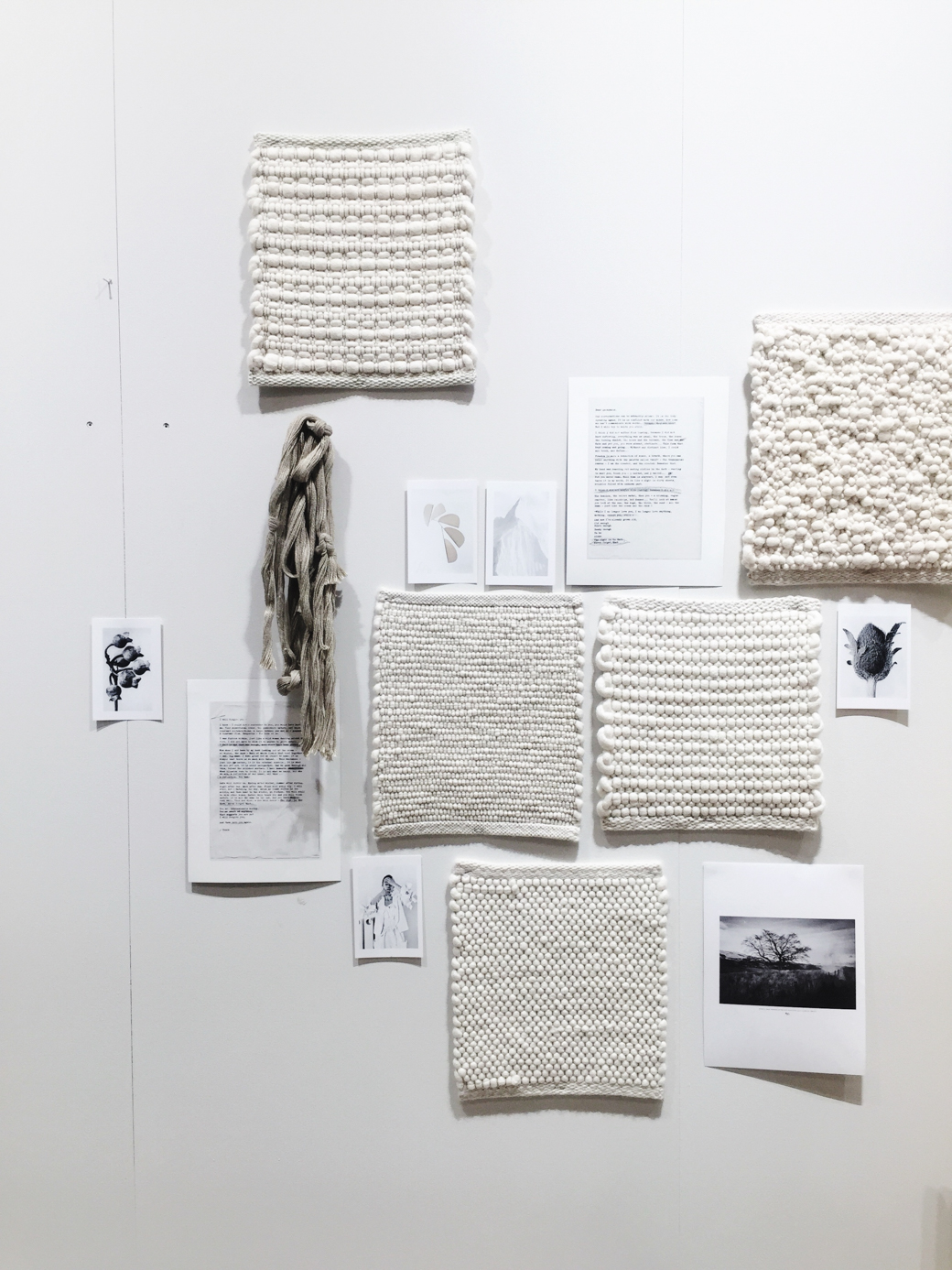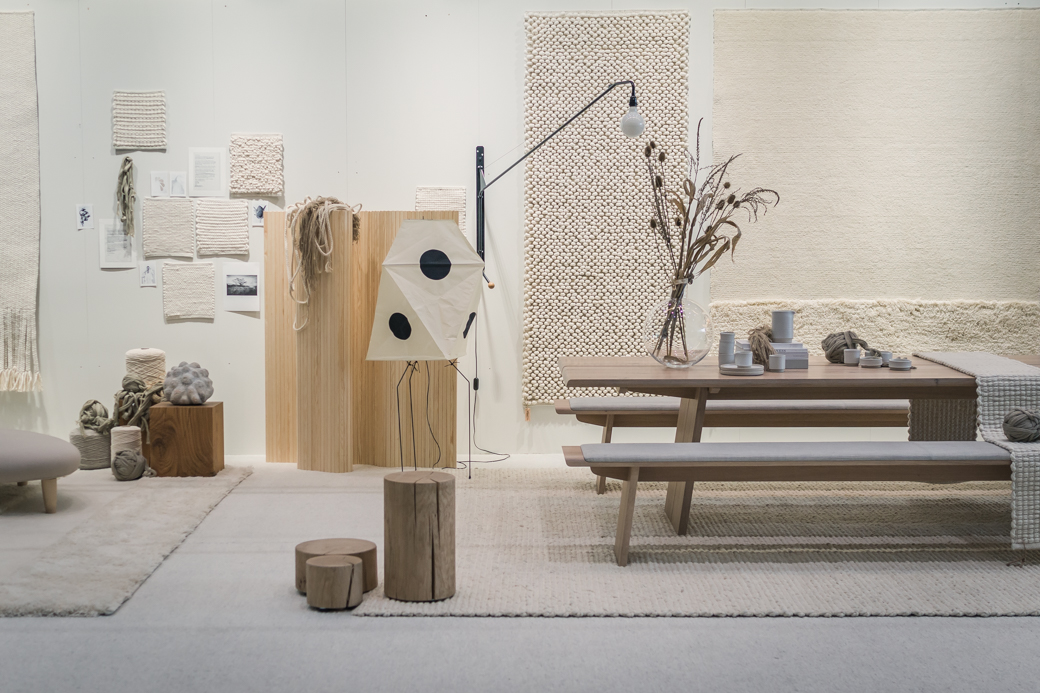Wabi-Sabi Style in 10 Steps
Hi and welcome to a new week on decor8! Let's talk about Wabi-Sabi today, okay? Ever since reading, Wabi-Sabi Welcome by Julie Pointer Adams last summer, and two years before that, The Life-Changing Magic of Tidying Up: The Japanese Art of Decluttering and Organizing, by Marie Kondo, I wondered exactly how these two lifestyle and decor trends would merge and find their "place" in modern living. Then came the Danish HYGGE as a "trend", which felt like a good way to merge eastern and western ideas and decor, and it still is.
Yet, there is still a push towards even more simplicity and a better edit of our homes, which is why WABI SABI seems to be gaining traction. So let's talk about, shall we? First, a defniteion is important...
Wabi Sabi Style Moodboard by Lotta Agaton Interiors, Photo: decor8
“In traditional Japanese aesthetics, Wabi-sabi (侘寂) is a world view centered on the acceptance of transience and imperfection. The aesthetic is sometimes described as one of beauty that is “imperfect, impermanent, and incomplete”. It is a concept derived from the Buddhist teaching of the three marks of existence (三法印 sanbōin), specifically impermanence (無常 mujō), suffering (苦 ku) and emptiness or absence of self-nature (空 kū).
Characteristics of the wabi-sabi aesthetic include asymmetry, roughness, simplicity, economy, austerity, modesty, intimacy, and appreciation of the ingenuous integrity of natural objects and processes.”
I often wondered, after reading Kondo's books and then, Pointer Adams' book, how would someone get rid of everything on one side (ala Kondo's overarching theme - ultimate simplicity/minimalism) with the exception of a few things, while also having a wabi-sabi home which is, as Author Pointer Adams outlines in her book, "Wabi means something like simplicity, humility, and living in tune with nature; it describes someone who is content with little and makes the most of whatever he or she has, always moving toward having less. Sabi, on the other hand, refers to what happens with the passage of time; it's about transience and the beauty and authenticity of age,"?
How will you have a very de-cluttered home with few belongings but also have things that you've saved over time which creates this sort of authenticity of living? Hmmmm. I guess westerners are creating a bit of Wabi-Sabi Our Way?
Tisca Rugs "Wabi Sabi Style" by Lotta Agaton Interiors at Domotex, Hannover, Germany
I gave a lecture last month at Formland in Denmark about trends and spoke about WABI-SABI and how I see it as a definite interiors trend. I've noticed this Japanese aesthetic gaining traction here in Europe and also in the United States - have you noticed this as well? That's why I thought to talk about it today, as it's something I find worthwhile of a good old-fashioned blog post - I actually miss writing posts like these where I really explore trends. I don't find Instagram as emotionally satisfying as a good blog post now and then, to really capture what I'm thinking and to put it on digial paper.
Back to the books... While seemingly close in theory, The Magic of Tidying Up and the Wabi-Sabi Welcome book still feel very different to me in practice yet I'm beginning to see that the happy middle point is more of how I personally aspire to live. I see Wabi-Sabi as a lot more warm and less methodical, and definitely imperfect.
I like things in my home, I like some "clutter" (and I use air quotes because my clutter is 10 things on a desk, not piles of things), I like saving my skinny jeans because it does give me a good feeling to imagine getting back into them again (and I have a few times, they are always my bookmark of being in shape, or not), and I can't imagine ever throwing out some things from my son (like his wrist ID bracelet from his birth), yet I also know there is MAGIC in tidying up and having a lot less junk in the house that serves little to no purpose except to create chaos and stress.
The way Wabi-Sabi is being interpreted however, is a bit different but also the same, as how the Japanese have been doing it for ages. Wabi-Sabi to westerners seems to be Kinfolk, minimalism combined with clean lines and organic shapes and imperfection thrown in - but overall, definitely thought out and planned. Which isn't really so Japanese.
I digress... But I wonder, how do you see this Wabi-Sabi Style fitting into your life? Could you adopt it? Let me explain further what it is in 10 Steps and then maybe you can answer that question better. It can be broken down this way:
1. EMBRACE AGING
I wish we could do this better with ourselves! Allowing things to age gracefully and enjoy what you have instead of always bringing in the newest and greatest. Not intentionally making something look worn or aged. Not buying something that looks aged. The age comes over time.
2. NATURAL MATERIALS
Living and working with raw, honest, organic materials as much as possible. Less plastic, more wood. Glass, marble, ceramics, concrete, stone, metal, etc.
3. NATURAL COLOR
Wabi-sabi draws from the colors of nature. What you see when you go to the beach, the mountains, the dessert - these hues, this is wabi-sabi color. Obviously, lots of neutrals and gray tones.
4. NO FUSS
You don't need to press the linen drapes or the tablecloth, no need to hem the curtains, no worries if the floor has some scuff marks or the linen sofa is wrinkled and worn in a bit. As long as things are clean and fresh looking, no fuss, casual, simple - this is wabi-sabi and in a modern home, isn't this refreshing to live like this vs. having the perfectly pressed drapes and the tablecloth without a crease?
5. NATURE
Bringing nature in. Sticks in vases, branches in pots, leaves scattered on the dining table for an Autumn feast, acorns in a bowl collected by your son, craft projects with natural materials (think: Waldorf School style - my aunt was a educator at one in New England and I love and fully support their curriculum), pampus plumes in pottery, the key is not to overdo it and let things fall as naturally and loosely as possible - again, no fuss! No perfection!
6. LIGHT
Embracing and enhancing as much natural light as possible. I leave the lights off until it's dark outside, which saves on our electricity bill but also I feel better working near the windows and keeping my home very light and bright. In rooms where privacy is essential, I have natural linen drapes and shapes. But out of the 10+ rooms in my home, only 3 rooms have linen drapes, the rest of shades or nothing at all. I find this daily connection to the outside world really helpful - it is great for depression because you don't feel isolated and alone when you see people and homes and are forced to be part of the daily routines of others - you can't draw the thick velvet drapes and stay cocooned in - and I like this.
7. SCENT
Open the windows. This may not be part of wabi-sabi style as much as it's something I've added here because I open the windows in all seasons, once a day at least, to keep the fresh air circulating and new smells to come in and old ones, to exit. I use healthy, organic candles and also I have Muji fragrant lights and use essential oils to make the home smell wonderful. I also use Humdakin cleaning products, even for our clothing, and my house smells and looks so nice just from a few simple, but effective products.
8. STRONG EDIT
This is one of my favorite things about decorating but also where I'm at in my own decorating timeline, which is, the importance of a good, strong edit. You hear this a lot in fashion but it applies as much in design for the home and styling overall. It's fine to curate and collect, but you need to have a real editor's eye and give a good edit before calling your vignette, room or even the home, "done" (at least for this week, no one ever finishes the on-going art project that is decorating). A strong edit is essential in the style of wabi-sabi because humility is, to me, a fundamental characteristic of this Japanese aesthetic.
For instance, Jonathan Adler and Abigail Ahern are NOT wabi-sabi in any way, shape or form. They are maximalists, they thrive on being over-the-top, overly decorated, bling, fun, personality, stuff!
But then you look at someone like Kristina Dam, a trained architect turned product designer, Lotta Agaton and also Pella Hedeby out of Sweden (whom I had the pleasure of meeting in Hannover, Germany last month), or even London-based Stylist and Art Director Sania Pell has gone into this direction in the past 6 years, and you see humility, paired back, a strong edit, and that definitely less is more.
9. CLUTTER FREE
Along with a strong edit when decorating and choosing objects for the home comes a clutter-free environment. You don't really need all of those sweaters, socks and extra shoes (that are no longer even stylish in your eyes), do you? Do you need to keep ALL of the baby clothes from when your son was little? Can you keep maybe a few outfits and donate the rest? Even digitally, do you need your computer hard drive to be packed with millions of photos that you'll never refer to, or need? Digital clutter is also clutter. Consider strongly what you need and what you don't need and be ruthless!
10. USEFUL AND PRETTY, IN BALANCE
I have been preaching this for over a decade in my books, along with most of the things on this list above though I don't have a "wabi-sabi style" home, but I believe in having useful and pretty things that we're using daily. You don't need to have an ugly neon green toothbrush when you can buy a nice looking wooden toothbrush from Muji, you don't need to have your bathtub littered with products with ugly labels that make your eyes hurt - you can store them away, put the contents in clear simple bottles (again, Muji), or buy products with labels that are good-looking and are pleasing to you visually. Some people are more sensitive visually than others, just as some are more sensitive to smell and sound. I think people in the decorative arts are very visually sensitive and anything that introduces stress to them has to be dealt with, even if to others it makes us look a little crazy or OCD. But I do believe strongly that you can have pretty soap in nice dispensers, towels that look and feel good against the skin, mixing tools and bowls for the kitchen that fit your personal style too, and that you aren't going to necessarily pay more for the white bowl versus the ugly one that has the crazy pattern on it.


